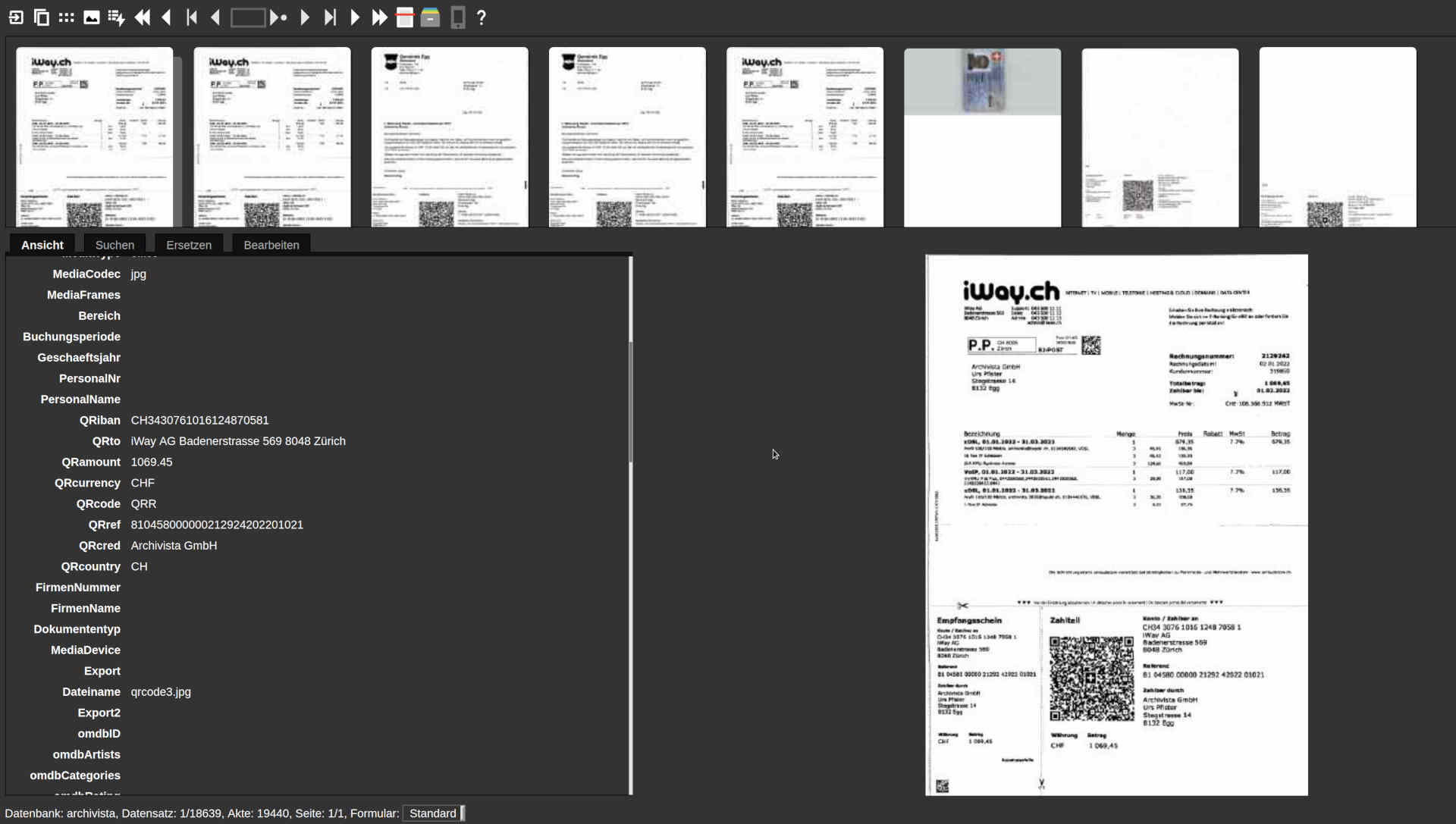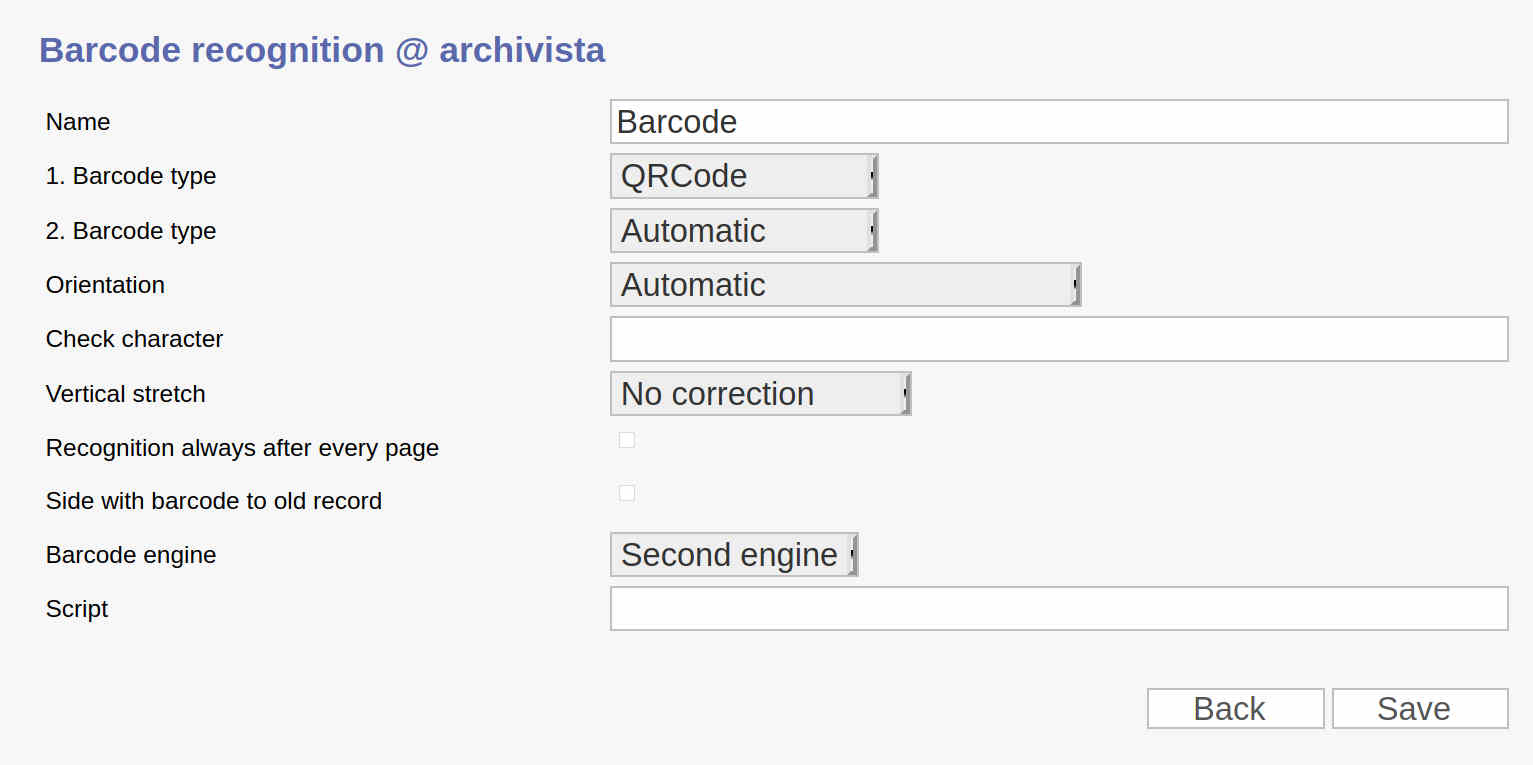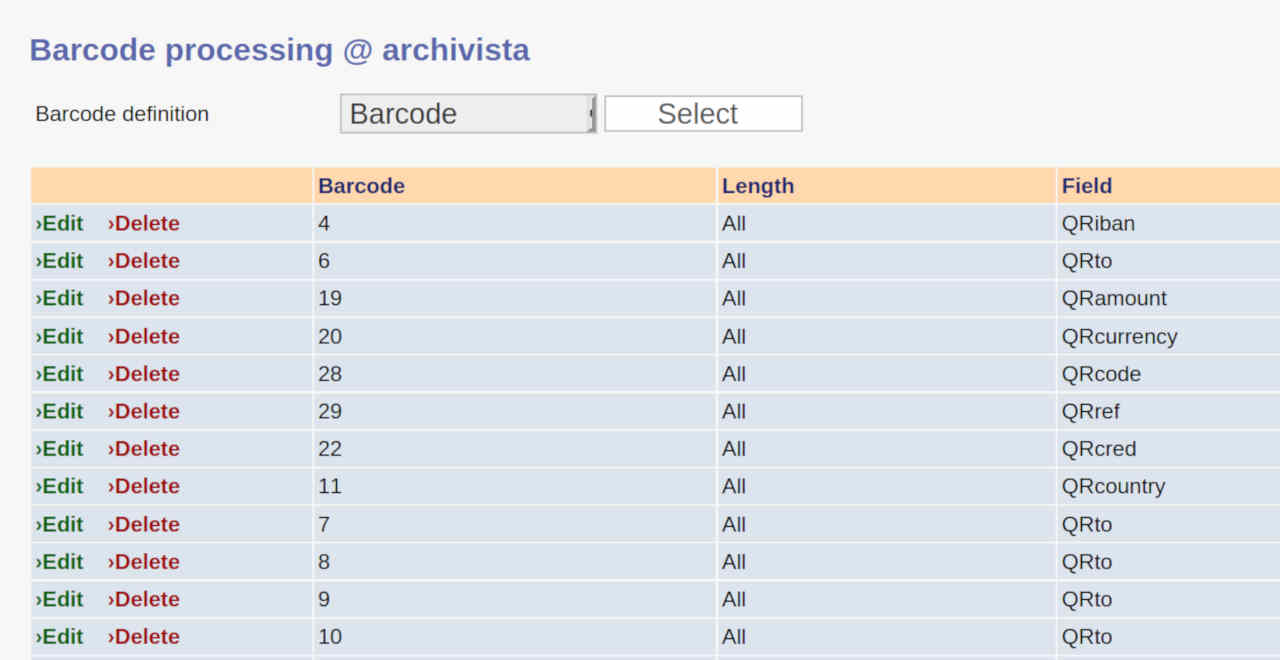2D barcode recognition with new power
Egg. 9.6.2022: For many years, the ArchivistaBox has supported the recognition of QR codes. However, when implementing the recognition of the Swiss-QR invoice, it became apparent that better recognition and processing makes a lot of sense. This blog presents the new solution based on ArchivistaBox 2022/VI.
This is why the previous solution was no longer up to date
QR codes have been able to be processed with ArchivstaBox or WebDMS for years. Over the years, however, QR codes have become larger and larger because they contain more information.
The Swiss QR invoice is a prime example. In the currently encountered version 2.0, there are over 30 fields “hidden” in the QR code. There are no fixed lengths, such as 30 characters for the name or the location. Only those characters that are necessary are stored. The individual information is separated by lines. Here is an example:
SPC 0200 1 CH3430761016124870581 S iWay AG Badenerstrasse 569 8048 Zürich CH
This produces impressive “results” in barcode recognition. In the case of the Swiss-QR invoice, this is up to 997 characters as well as well over 30 lines.
The barcode recognition of the ArchivistaBox has been on board since the beginning, i.e. since 2005. At that time there were only so-called 1D barcodes (zebra stripes). In contrast, the QR codes are also called 2D barcodes (square with small dots).
The old (classic) 1D barcodes take up a relatively large amount of space and can only hold a few characters per barcode. For this reason, multiple barcodes were sometimes placed on one receipt. Barcode 1 stored the customer number, barcode 2 the invoice number, etc.
Until now, the ArchivistaBox was able to process a maximum of 5 barcodes. When implementing the Swiss-QR invoice, the question arose as to how the individual lines or elements of a QR code could be processed most easily in the ArchivistaBox. It should be noted that a Swiss-QR invoice can contain well over 30 elements.
ArchivistaBox 2022/VI processes QR codes with up to 48 elements.
Version 2022/VI considers the individual line elements of QR codes as individual barcodes during processing. This makes it very easy to assign the desired sub-elements of the QR code to the desired fields. First, however, it is necessary to activate the new QR code recognition:
The question remains, how to activate the new QR recognition in WebAdmin. To do this, simply activate the sub-item ‘Barcode recognition’ in the barcodes in WebAdmin. After that the option ‘QRCode’ can be activated at 1st barcode type.
Note: The menus for the barcodes will of course only appear if the ‘Barcode recognition’ module has been purchased for the respective ArchivistaBox.
Multiple assignment of elements to a field
In Swiss-QR-Invoice, the addresses are coded in a rather special way. Permitted is both:
iWay AG Badenerstrasse 569 8048 Zürich
Further it is possible to show the address more compactly:
iWay AG Badenerstrasse 569 8048 Zürich
The processing of the address is therefore not entirely trivial. In the ArchivistaBox, individual elements can be assigned to a specific element multiple times. The following example illustrates this:
Elements 6 to 10 are all assigned to the QRto field. This results in the following processing for the ArchivistaBox:
Note: No scripts are necessary for this example. It is sufficient to make the above assignments during barcode processing.
Five advantages of ArchivistaBox QRCode recognition
No need for manual interaction: Unlike solutions where the QR code has to be individually scanned on the document, the ArchivistaBox QR code recognition works without interaction. The QR codes on the documents are located and processed completely automatically on the document during capture.
Automatic forwarding to ERP solution: The data captured in this way can be forwarded to the accounts payable management of (almost) any ERP solution without the need to purchase additional QR code devices.
No need to cut/separate payment parts: QR code readers are nice to have, but they require the payment parts to be either appropriately separated or cut.
Same interface for digital and analog documents: QR codes can be processed with the same technology, regardless of whether PDF files or scanned documents are used.
Support directly from the manufacturer: The ArchivistaBox is developed and manufactured in Switzerland. The maintenance contract for all ArchivistaBox products is included in the price for the first year.







